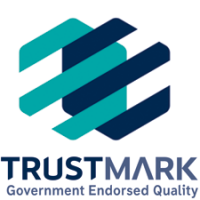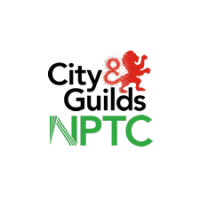Buying a house with an invasive weed infestation doesn’t have to be an issue. By following these 3 steps to buying a house with Japanese Knotweed you can be confident you have taken the correct precautions and potentially improve your chances of securing a mortgage on a property with Japanese Knotweed.
The steps to buying a house with Japanese Knotweed
1 Order a survey from a Property Care Association Certified Surveyor in Japanese Knotweed
2 Seek advice from a mortgage broker
3 Consider removal/management control programme backed by a 10 year insurance guarantee
Why is Japanese knotweed such a problem?
The Environment Agency, in 2006, put Japanese Knotweed as number one on its list of top ten uncontrolled species in Britain. Japanese Knotweed out competes all other native species in the UK and can give rise to problems within the built environment, by exploiting weaknesses in drains, paving, Tarmac and walls.
It has almost no natural predators in the UK and was estimated to cost the UK around £166 million each year in damage, management and removal and an estimated 1.45 million homes are affected by it. If this plant branches out into neighbouring properties it can lead to problems when it comes to buying and selling a property and can land you in trouble with the law.
It is not advisable to try to remove Japanese Knotweed yourself
Many types of knotweed can easily be mistaken by the untrained eye and has the potential to spread when it’s dug up
Buying and selling property affected by Japanese Knotweed – Overview
A proportion of the prospective purchasers who discover that a property is, or even has previously been, affected by Japanese knotweed may withdraw from the purchase, resulting in a reduced level of demand. Others may seek a reduction in the purchase price, the amount of which will be influenced by a number of factors. Significantly, some of these factors are not considerations when dealing with ‘normal’ building defects and valuing a residential property when Japanese knotweed is involved needs to properly reflect all of the influences.
If you are selling:
- It is a legal requirement to declare if Japanese knotweed is present on a property.
- It can be declared in the Seller’s Property Information Form – TA6
- If you aren’t aware of any Japanese knotweed on the property a conveyancing survey for the buyer should pick this up.
- If Japanese Knotweed is found a treatment plan or its removal may be needed before being allowed to continue with the sale.
If you are buying:
- The best way to mitigate the risk is to have a survey before you complete your property purchase.
- Your mortgage provider will typically ask for a plan of action for Japanese Knotweed treatment or removal as part of your mortgage agreement.
- Your surveyor should be able to advise on what action is required and whether the plant must be dealt with before the agreed sale.
Recent changes in guidance
Important note on changes to the Royal Institute of Chartered Surveyors Guidance on Japanese Knotweed and residential property
Guidance information on Japanese Knotweed
The steps to buying a house with Japanese Knotweed
1 . Order a survey:
The best way to mitigate the risk is to request a full building survey by a RICS surveyor, including the garden, if knotweed is identified, then request a Japanese knotweed survey.
Specialist Survey (PCA approved)
If you’re concerned about the presence of Japanese knotweed it is best to organise a specialist survey on the property by a RICS surveyor who is approved by the PCA (Property Care Association) and obtain a full report of the current situation.
Residential Survey
Surveys typically check for Japanese knotweed, on properties with large plots of land, or where the weed is dormant, it will not necessarily be found unless a specialist survey is requested, although residential surveyors have a duty of care to both the homebuyer and the mortgage provider to identify Japanese knotweed during a survey.
It is important to recognise that standard residential valuations and surveys are not specifically focused on finding and advising on Japanese knotweed, any more than they are intended to provide formal risk assessments.
Features Associated With The Growth Of Japanese Knotweed
Neighbourhood features associated with the growth of Japanese knotweed typically include the presence of:
- Local water sources, such as culverts, ponds, canals and lakes
- Public and private paths, cycle-paths, roads, railway or underground railway embankments, dual carriageways and motorways
- Large open spaces, car parks and derelict and cleared sites, and
- Commercial and industrial buildings, workshops, storage depots and similar, and areas with fly tipping.
Likely locations for Japanese knotweed growth can be identified prior to and after the actual inspection, for example while driving through the neighbourhood, arriving at or leaving the property, parking and preparing for the inspection.
Japanese Knotweed Surveys And Reports
Support buying, selling and re-mortgaging of property
Key to securing a mortgage in advance if there is any question of doubt about Japanese Knotweed being present or affecting your residential property
2 . Seek advice from a mortgage broker:
If possible this should be a broker with experience in securing mortgages on properties with Japanese knotweed, and that they work closely with reputable invasive weed management companies and knowledgeable PCA surveyors
You can take out a mortgage through a mortgage broker or directly from a bank or building society. Infestations of Japanese Knotweed can make a mortgage application more difficult. Each mortgage lender has their own policies, requirements and regulations, most will lend if there is a professional treatment plan, backed up by insurance, in place.
How mortgage lenders decide if Japanese knotweed poses a threat to a property
Japanese Knotweed is incredibly resilient, and often lies dormant underground when believed to be eradicated. It is a particularly tricky plant that can revive its growth after being dormant for a long time, often when disturbed by further work on the property like the building of an extension.
A typical Japanese knotweed infestation in a residential property may result in a loss of amenity,
some disruption to landscaped areas, driveways, paths, and possibly damage to footings or
foundations of structures.
Change in law governing invasive weeds
RICS (Royal Institution of Chartered Surveyors) have stopped using the risk matrix 7 metre rule used to help mortgage lenders decide how risky the presence of the plant is in favour of a Management Category assessment decision tree following an update in the law regarding Japanese Knotweed. The RICS guidance note
Importantly, the House of Commons Science and Technology Committee says: “There is also a recognition that the most appropriate objective when Japanese knotweed is encountered is to ensure an appropriate level of control rather than to automatically strive for eradication. In some circumstances, for example when construction is proposed, proper control may involve physical removal but in many domestic situations effective control can be achieved by the managed application of herbicides. As part of normalising expectations in relation to Japanese knotweed, the assessment directs the valuer or surveyor to outcomes related to the management of Japanese knotweed rather than emphasising risk to buildings.”
3 . Consider removal/management:
You can make a decision about whether the management or removal of knotweed is needed. Depending on the results of your report, a treatment plan offering an insurance backed guarantee will be enough for a lender to go ahead.
Managing Japanese Knotweed with a treatment plan
When Japanese knotweed has been identified at a property, further investigation should be carried out by an accredited member of a recognised trade body such as the PCA. A report should be provided and, depending on the findings, a management programme should be prepared. The management programme can provide the necessary reassurance to all interested parties that a Japanese knotweed problem is being properly managed.
Any treatment plans will usually need to be covered by a 10 year insurance-backed guarantee and a detailed report of the treatment plan is usually also required. The mortgage may be placed on hold until the first treatment has commenced.
A typical Japanese management plan should include the following:
- A description of the property with an accurate record of the Japanese knotweed infestation
- A scaled plan with dimensions; supporting photographs are also useful
- Full details of the contracting organisation and a description of the methods to be used to control and manage or eradicate the Japanese knotweed
- A treatment schedule that is updated as treatments are carried out
- On completion, there should be a certificate confirming that the plan (including a 2-year ‘no growth’ period) is complete and that the Japanese knotweed at the property has been remediated. A recommendation for long-term monitoring may be made, especially with respect to herbicide treatment plans.
For residential properties, there are usually only two remediation options available, either chemical control using herbicides or physical removal by excavation, but the details of the necessary treatment will vary depending on the circumstances on site. In practice, Japanese Knotweed Management Plans may include a combination of both approaches, and the relative costs of the options available will be only one factor to take into account when deciding the most appropriate method of remediation.
What is a 10 year Insurance backed guarantee (IBG)?
Most knotweed treatment companies will offer an insurance-backed guarantee. This promises to retreat any regrowth during the guarantee period, also referred to as Japanese Knotweed IBG, Japanese Knotweed indemnity, and Japanese Knotweed insurance-backed warranty, the insurance-backed guarantee ensures that any obligation is met and the management plan will be fully completed even if the company goes out of business.
Lenders prefer insurance backed guarantees for knotweed because they offer more protection to the home owner and, of course, the lenders themselves.
A clear offering from a trustworthy firm that has the ability to do good work and back it with UK based insurance, gives a great deal of comfort but this should be secondary to knowledge that the firm being employed will do good work and is likely to be around in the unlikely event that problems persist.
“We steadfastly believe that Property Care Association members providing ten year guarantees that can be backed by solid UK based FCA regulated insurance, provides reliance, stability and the best long term protection to consumers.” – Property Care Association
Sources
Source: Post Office Mortgages https://www.postoffice.co.uk/mortgages/japanese-knotweed-protection
Source: Pete Mugleston – Mortgage Expert https://www.onlinemoneyadvisor.co.uk/property/japanese-knotweed-mortgage/
Source: Emma Lunn – Personal Finance Journalist
https://www.comparemymove.com/advice/buying-a-home/buying-house-japanese-knotweed
Source: RICS Japanese Knotweed and residential property
Source: PCA invasive weed control document library
Check for Invasive Weeds
Contact us to discuss arranging a site visit report to check your site for invasive weeds likely to give rise to problems.
Book an appointment for a quick call









